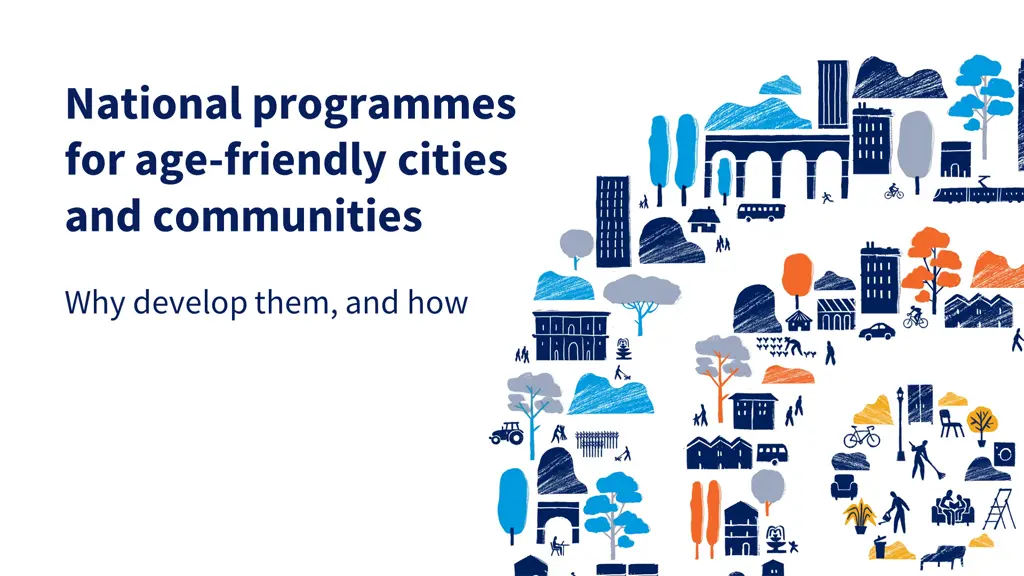National programmes for age-friendly cities and communities
Explore the importance of national programs for age-friendly environments and their benefits in fostering inclusiveness and resilience. Learn how creating age-friendly spaces enhances well-being and contributes to sustainable development goals.
Download Presentation

Please find below an Image/Link to download the presentation.
The content on the website is provided AS IS for your information and personal use only. It may not be sold, licensed, or shared on other websites without obtaining consent from the author. Download presentation by click this link. If you encounter any issues during the download, it is possible that the publisher has removed the file from their server.
E N D
Presentation Transcript
National programmes for age-friendly cities and communities Why develop them, and how
Our environments are key to closing the gaps Environments comprise all the factors in the outside world that form the context of an individual s life. These include home, communities, and the broader society. Within these environments are a range of factors, including the built environment, people and their relationships, attitudes and values, health and social policies, the systems that support them, and the services that they implement. Housing Assistive technologies Transport Social facilities
Age-friendly environments enable all people to: age well in a place that is right for them continue to develop personally be included contribute to their communities enjoy independence and good health
Age-friendly environments benefit all community members by removing physical and social barriers and fostering inclusiveness. This not only benefits older people. It also improves accessibility, addresses gender inequities, and helps build the resilience of communities for emergencies.
Creating age-friendly environments is also one of the action areas of the UN Decade of Healthy Ageing (2021 2030). The Decade is aligned with the 2030 Agenda for Sustainable Development and a commitment by all Member States to improve the lives of current and future generations of older people.
Developing age-friendly cities and communities is a proven way to create age- friendly environments. Age-friendly cities and communities improve access to key services and enable people to be and do what they value through action across eightdomains:
The benefits are demonstrated daily by the WHO Global Network for Age-friendly Cities and Communities, featuring over 1400 members across 51 countries all committed to becoming more age-friendly. Learn more about the Global Network here:
For example, the Global Database of Age-friendly Practices features over 700 concrete activities implemented by Global Network members to make their communities better places to grow older.
National programmes are one way for countries to accelerate the development of age-friendly cities and communities. They: Enable countries to deliver on global commitments, such as the UN Decade of Healthy Ageing Inspire and support local action in both rural and urban areas Ensure more people can age with health and well-being
There are already successful examples of national programmes for age-friendly cities and communities around the world. Here is what some of them have to say about their benefits:
A new guide and toolkit is available from WHO to support countries in developing national programmes for age-friendly cities and communities. It includes: A practical step-by-step framework covering planning, implementation, evaluation, and reflection Detailed case studies from existing national programmes Key contacts for support and much more
Together, we can create an age-friendly world For more support and to access the guide, visit WHO s resource hub on national programmes for age-friendly cities and communities Join the WHO Global Network for Age-friendly Cities and Communities to connect with others, be inspired, and receive support
















































